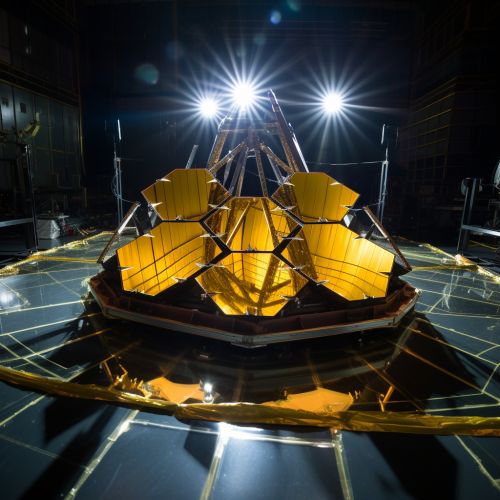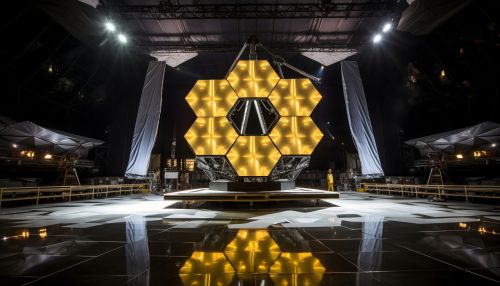James Webb Space Telescope
Introduction
The James Webb Space Telescope (JWST) is a large, space-based observatory, set to launch in 2021. The project is a collaborative effort between NASA, the European Space Agency (ESA), and the Canadian Space Agency (CSA). The JWST will be the premier observatory of the next decade, serving thousands of astronomers worldwide. It will study every phase in the history of our Universe, ranging from the first luminous glows after the Big Bang, to the formation of solar systems capable of supporting life on planets like Earth, to the evolution of our own Solar System.


Design and Development
The James Webb Space Telescope features a unique design that sets it apart from its predecessors. The telescope's primary mirror is 6.5 meters in diameter, composed of 18 hexagonal mirror segments made of ultra-lightweight beryllium. These mirrors are coated with a thin layer of gold to optimize their reflective properties in the infrared part of the spectrum.
The telescope also features a large sunshield that blocks heat and light from the Sun, Earth, and Moon. The sunshield is roughly the size of a tennis court and is composed of five layers of a specially coated, ultra-thin, heat-resistant material called Kapton. This sunshield allows the telescope to cool to temperatures below -220 degrees Celsius, which is necessary for its sensitive instruments to function properly.
The development of the James Webb Space Telescope has been a complex and lengthy process, involving numerous technological innovations and challenges. The project was initially proposed in 1996 and has since undergone various design changes, budget overruns, and schedule delays. However, despite these challenges, the telescope is now in its final stages of testing and is set to launch in 2021.
Scientific Objectives
The James Webb Space Telescope has four main scientific objectives: to search for light from the first stars and galaxies that formed in the Universe after the Big Bang; to study the formation and evolution of galaxies; to understand the formation of stars and planetary systems; and to study planetary systems and the origins of life.
These objectives will be achieved through a wide range of observations, including imaging and spectroscopy of distant galaxies, direct imaging of exoplanets, and observations of the interstellar medium. The telescope's instruments are designed to operate primarily in the infrared range of the spectrum, with some capability in the visible range.
Instruments
The James Webb Space Telescope carries four main instruments: the Near Infrared Camera (NIRCam), the Near Infrared Spectrograph (NIRSpec), the Mid-Infrared Instrument (MIRI), and the Fine Guidance Sensor/Near InfraRed Imager and Slitless Spectrograph (FGS/NIRISS).
Each of these instruments has unique capabilities and will be used for a variety of scientific investigations. For example, NIRCam will be used to detect light from the earliest stars and galaxies, NIRSpec will be used to study the formation of galaxies, MIRI will be used to study the formation of stars and planetary systems, and FGS/NIRISS will be used for exoplanet research and stellar astrophysics.
Launch and Deployment
The James Webb Space Telescope is set to launch on an Ariane 5 rocket from the Guiana Space Centre in French Guiana. After launch, the telescope will undergo a complex series of deployments, including the unfolding of its sunshield and primary mirror, before it reaches its destination at the second Lagrange point (L2), approximately 1.5 million kilometers from Earth.
Once at L2, the telescope will undergo a commissioning period of approximately six months, during which its instruments will be calibrated and tested before beginning their science operations.
